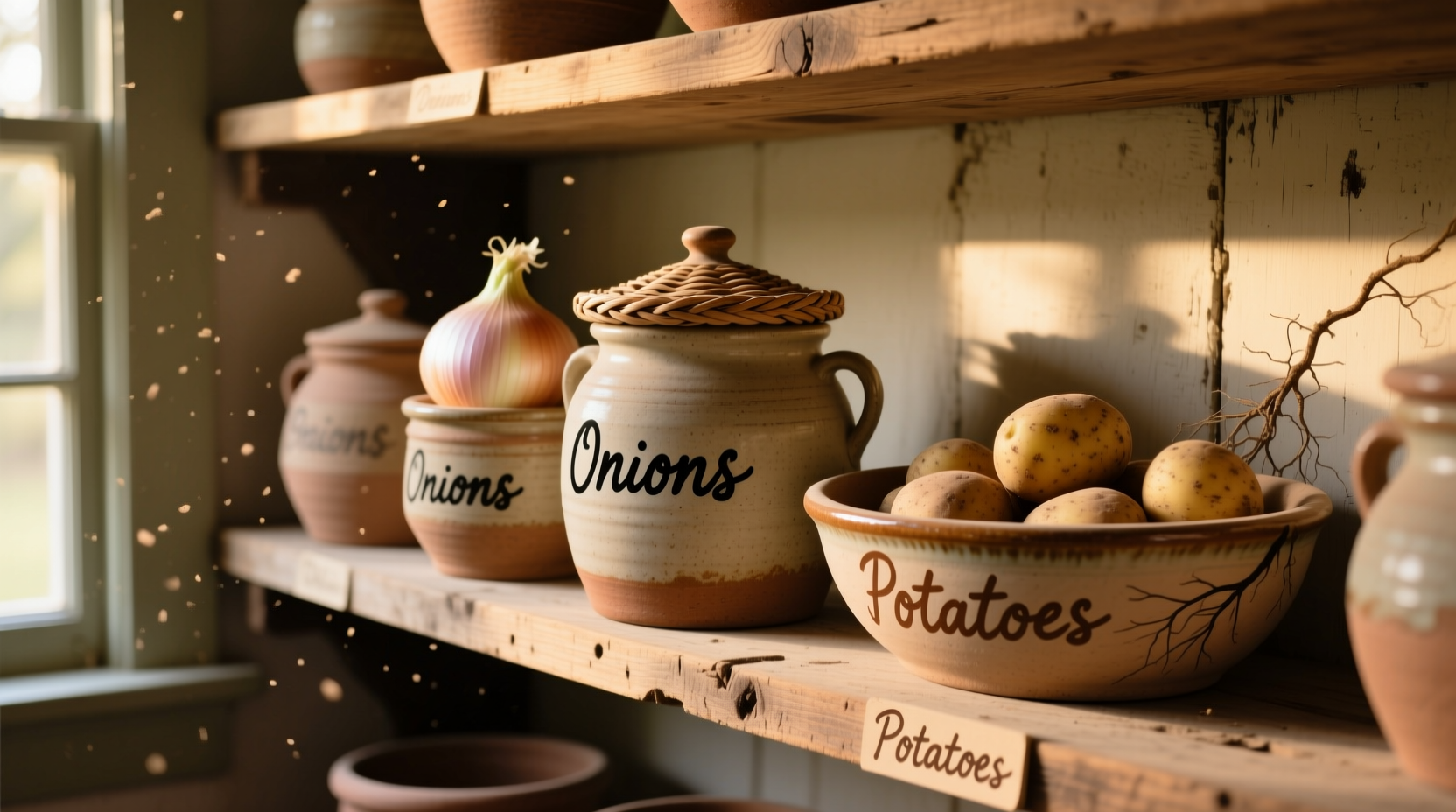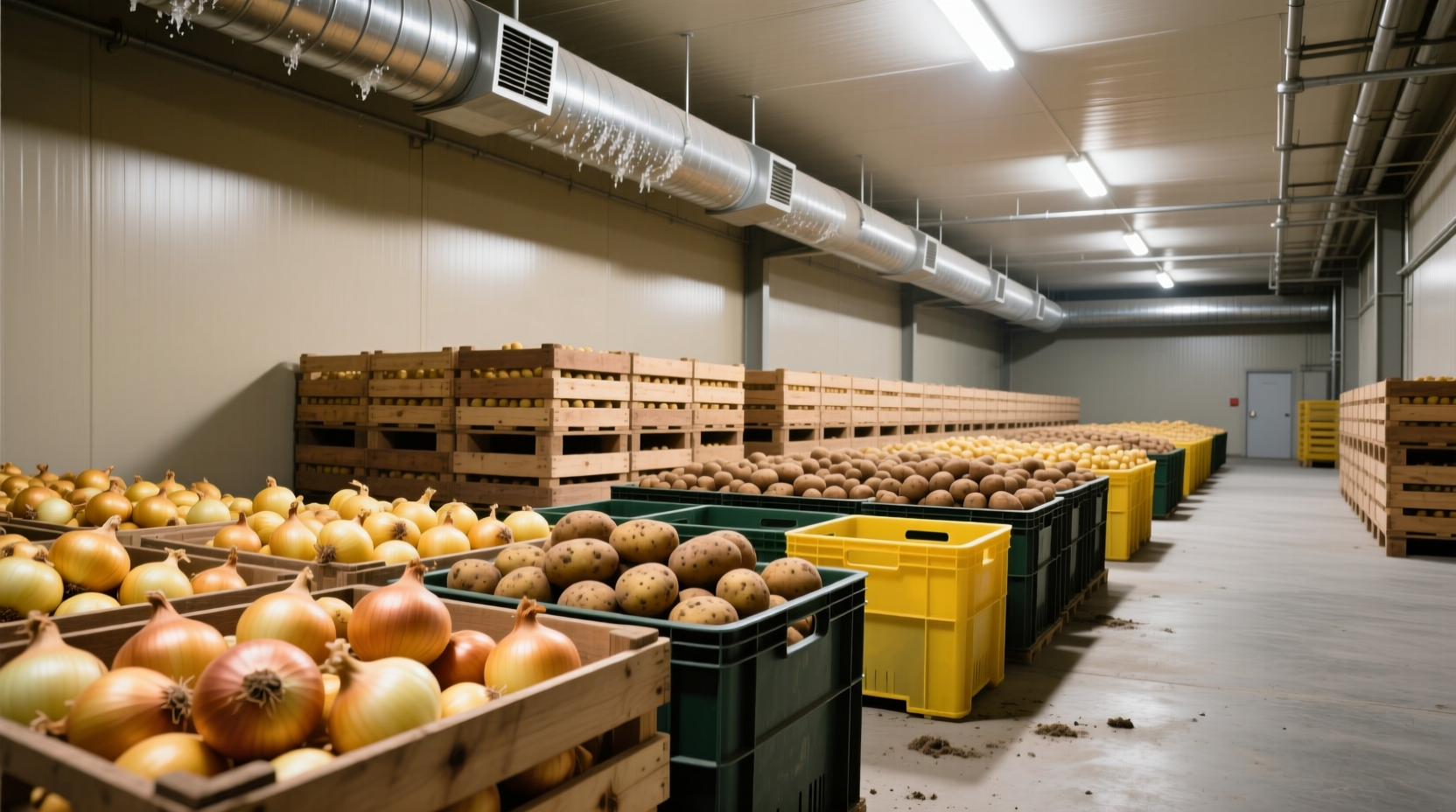Proper storage of onions and potatoes isn't just about keeping them in a dark corner of your kitchen. Understanding the specific environmental needs of each vegetable prevents premature sprouting, mold growth, and flavor degradation. When stored correctly, potatoes can last 2-3 months while onions maintain quality for 1-2 months beyond typical shelf life.
The Critical Difference Between Onion and Potato Storage Needs
Many home cooks make the same critical mistake—storing onions and potatoes together. This common practice actually accelerates spoilage for both vegetables. Potatoes release moisture and ethylene gas, which triggers onions to sprout and become soft. Conversely, onions emit gases that can cause potatoes to sweeten prematurely and develop off-flavors.
| Storage Factor | Onions | Potatoes |
|---|---|---|
| Optimal Temperature | 45-55°F (7-13°C) | 45-50°F (7-10°C) |
| Ideal Humidity | 65-70% | 90-95% |
| Light Exposure | Complete darkness | Complete darkness |
| Air Circulation | Essential | Moderate |
| Storage Duration | 1-2 months | 2-3 months |
This comparison reveals why these vegetables require separate storage solutions despite both benefiting from cool, dark environments. The USDA Agricultural Research Service confirms that storing these vegetables together creates a chemical reaction that compromises both products' quality and shelf life.
Step-by-Step Storage Protocol for Maximum Freshness
Preparing Your Vegetables for Storage
Before storing either vegetable, proper preparation is essential. For potatoes, gently brush off excess dirt but avoid washing—moisture promotes decay. Cure freshly harvested potatoes at 50-60°F (10-15°C) with high humidity for 10-14 days to thicken skins. Onions require curing too: spread them in a single layer in a warm, dry, well-ventilated area for 2-3 weeks until necks are completely dry.
Optimal Storage Containers and Locations

For onions, use mesh bags, bamboo baskets, or even pantyhose (knotting between each onion). These breathable containers prevent moisture buildup that leads to mold. Store in a cool, dark pantry away from heat sources. Potatoes perform best in cardboard boxes or paper bags with ventilation holes, never in plastic which traps moisture.
The National Center for Home Food Preservation recommends storing potatoes at exactly 45-50°F (7-10°C)—cooler than typical room temperature but warmer than refrigeration. A basement or root cellar provides ideal conditions. If you lack these spaces, choose the coolest, darkest cabinet in your kitchen away from your stove and refrigerator.
Common Storage Mistakes and How to Avoid Them
Refrigeration is the most frequent error for both vegetables. Cold temperatures convert potato starch to sugar, creating unpleasant sweetness and causing darkening when cooked. Onions develop moisture and become soft in refrigerators' high humidity environment.
Another critical mistake is storing near ethylene-producing fruits like apples or bananas. While ethylene helps ripen some produce, it triggers sprouting in potatoes and onions. Keep these vegetables isolated from other produce except for garlic, which shares similar storage requirements.
Troubleshooting Guide: When Storage Goes Wrong
Sprouting potatoes: If eyes begin to develop, immediately move potatoes to a slightly cooler location. Remove sprouts before cooking—never eat green or sprouted areas as they contain solanine, a natural toxin.
Soft or moldy onions: This indicates excessive moisture. Transfer remaining onions to a drier location with better air circulation. Remove any affected onions immediately to prevent spread.
Early spoilage timeline: If your potatoes last less than 3 weeks or onions less than 4 weeks under proper conditions, check your storage area's temperature fluctuations. Even brief exposure to warmth during grocery transport can reduce shelf life by 30-50%, according to research from the University of Idaho's Potato Research program.
Special Considerations for Different Storage Scenarios
Apartment dwellers: Without basements, use under-sink cabinets (away from plumbing heat) lined with newspaper for moisture absorption. Elevate storage containers on wooden boards to prevent contact with potentially damp floors.
Humid climates: Add silica gel packets (food-safe) to storage containers to absorb excess moisture. Replace monthly. The Clemson Cooperative Extension confirms this technique extends shelf life by 25% in high-humidity environments.
Large harvests: For gardeners with surplus produce, consider layering potatoes in sand or sawdust in wooden crates. This traditional method maintains consistent moisture levels while allowing proper air circulation.
When Refrigeration Makes Sense
While generally discouraged, refrigeration has limited applications. Peeled potatoes can be stored submerged in water in the refrigerator for 24 hours. Cut onions last 7-10 days when sealed in airtight containers in the fridge's crisper drawer. Never refrigerate whole, uncut potatoes or onions for long-term storage.











 浙公网安备
33010002000092号
浙公网安备
33010002000092号 浙B2-20120091-4
浙B2-20120091-4